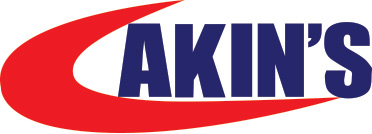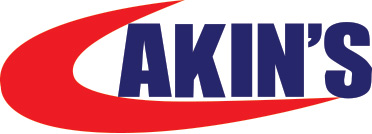
Suliverzum
Add a review FollowOverview
-
Founded Date April 17, 1966
-
Sectors Healthcare
-
Posted Jobs 0
-
Viewed 45
Company Description
The Employment-Based Permit: Your Comprehensive Step-by-Step Guide – Reddy Neumann Brown PC

The employment-based green card procedure is a multi-step procedure that enables foreign nationals to live and work permanently in the U.S. The procedure can be made complex and lengthy, however for those seeking irreversible residency in the U.S., it is an essential step to attaining that objective. In this post, we will go through the actions of the employment-based permit process in detail.
Step 1: PERM/Labor Certification
The PERM/Labor Certification procedure is typically the first step in the employment-based permit procedure. The procedure is designed to make sure that there are no competent U.S. employees available for the position which the foreign worker will not negatively affect the incomes and working conditions of U.S. employees.
Submit the Prevailing Wage Application
The employer starts the PERM procedure by preparing the task description for the sponsored position. Once the job details are completed, a dominating wage application is submitted to the Department of Labor (DOL). The prevailing wage rate is defined as the average wage paid to similarly employed employees in a particular profession in the area of desired employment. The DOL concerns a Prevailing Wage Determination (PWD) based on the specific position, job responsibilities, requirements for the position, the location of desired work, job travel requirements (if any), to name a few things. The prevailing wage is the rate the employer must at least provide the long-term position at. It is likewise the rate that should be paid to the worker once the green card is gotten. Current processing times for prevailing wage applications are 6 to 7 months.
Conduct the Recruitment Process
PERM regulations require a sponsoring employer to test the U.S. labor market through various recruitment techniques for “able, willing, qualified, and available” U.S. employees. Generally, the company has 2 choices when deciding when to begin the recruitment procedure. The employer can start marketing (1) while the prevailing wage application is pending or (2) after the PWD is provided.
All PERM applications, whether for job a professional or non-professional profession, need the following recruitment efforts:
– thirty days task order with the State Workforce Agency serving the area of intended employment;
– Two Sunday print ads in a newspaper of basic flow in the location of designated work, many appropriate to the occupation and most likely to bring reactions from able, ready, certified, and available U.S. workers; and
– Notice of Filing to be posted at the job site for a duration of 10 consecutive organization days.
In addition to the necessary recruitment discussed above, the DOL requires 3 additional recruitment efforts to be published. The company must pick 3 of the following:
– Job Fairs
– Employer’s business website
– Job search site
– On-Campus recruiting
– Trade or professional company
– Private work firms
– Employee referral program
– Campus placement office
– Local or ethnic newspaper; and
– Radio or TV ad
During the recruitment process, the employer may be reviewing resumes and carrying out interviews of U.S. workers. The employer should keep comprehensive records of their recruitment efforts, including the variety of U.S. workers who made an application for the position, the number who were spoken with, job and the reasons they were not worked with.
Submit the PERM/Labor Certification Application
After the PWD is released and recruitment is complete, the employer can submit the PERM application if no qualified U.S. employees were discovered. Currently the DOL is taking 8 to 9 months to process PERM applications after submission. The day the PERM application is filed develops the beneficiary’s top priority date and figures out his/her place in line in the permit visa line.
React To PERM/Labor job Certification Audit (if any)
An employer is not required to submit supporting paperwork when a PERM application is filed. Therefore, the DOL executes a quality assurance process in the type of audits to make sure compliance with all PERM policies. In case of an audit, the DOL normally needs:
– Evidence of all recruitment efforts carried out (copies of advertisements put and Notice of Filing);.
– Copies of candidates’ resumes and completed employment applications; and.
– A recruitment report signed by the employer describing the recruitment steps carried out and the results attained, the number of hires, and, if appropriate, the variety of U.S. applicants declined, summarized by the specific legal occupational reasons for such rejections.

If an audit is released on a case, 3 to 4 months are included to the overall processing time of the PERM application.
Receive the Approved PERM/Labor Certification
If the PERM application is approved, the company will receive it from the DOL. The approved PERM/Labor Certification confirms that there are no certified U.S. employees available for the position and that the beneficiary will not negatively impact the wages and working conditions of U.S. workers.
Step 2: I-140 Immigrant Petition
Once the PERM application has actually been approved, the next action is to submit an I-140 immigrant petition with U.S. Citizenship and Immigration Services (USCIS). The petition must consist of the approved PERM application and proof of the beneficiary’s qualifications for the sponsored position. Please note, depending on the choice classification and country of birth, a beneficiary may be eligible to submit the I-140 immigrant petition and the I-485 change of status application simultaneously if his/her date is present.

At the I-140 petition stage, the company needs to likewise demonstrate its ability to pay the recipient the proffered wage from the time the PERM application is filed to the time the permit is issued. There are 3 ways to demonstrate capability to pay:
1. Evidence that the wage paid to the recipient amounts to or higher than the proffered wage (pay-stubs, W-2s);.
2. Evidence that the business’s net earnings is equivalent to or higher than the proffered wage (yearly report, tax return, or audited monetary statement); OR.
3. Evidence that the business’s net possessions amount to or higher than the proffered wage (yearly report, income tax return, or audited financial declaration).
In addition, it is at this phase that the company will select the employment-based preference category for the sponsored position. The classification depends upon the minimum requirements for the position that was listed on the PERM application and the staff member’s certifications.
There are several classifications of employment-based permits, and each has its own set of requirements. (Please keep in mind, some categories might not need an approved PERM application or I-140 petition.) The classifications include:
– EB-1: Priority Workers.
– EB-2: Professionals Holding Advanced Degrees and Persons of Exceptional Ability.
– EB-3: Skilled Workers, Professionals, and Unskilled Workers (Other Workers).
– EB-4: Certain Special Immigrants.
– EB-5: Immigrant Investors
After the I-140 petition is submitted, USCIS will examine it and might request additional details or paperwork by releasing a Request for job Evidence (RFE).
Step 3: Permit Application
Once the I-140 immigrant petition is approved, the recipient will check the Visa Bulletin to determine if there is an offered green card. The actual permit application can just be filed if the beneficiary’s top priority date is current, suggesting a green card is right away available to the recipient.
Every month, the Department of State publishes the Visa Bulletin, which sums up the schedule of immigrant visa (permit) numbers and indicates when a permit has become offered to a candidate based on their choice classification, country of birth, and top priority date. The date the PERM application is filed establishes the recipient’s top priority date. In the employment-based migration system, Congress set a limitation on the variety of permits that can be issued each year. That limitation is currently 140,000. This indicates that in any given year, the maximum number of permits that can be provided to employment-based applicants and their dependents is 140,000.
Once the beneficiary’s top priority date is existing, he/she will either go through adjustment of status or consular processing to receive the permit.
Adjustment of Status
Adjustment of status includes making an application for the green card while in the U.S. After a modification of status application is filed (Form I-485), the recipient is alerted to appear at an Application Support Center for biometrics collection, which usually involves having his/her picture and job signature taken and being fingerprinted. This info will be used to conduct necessary security checks and for ultimate development of a green card, employment permission (work license) or advance parole document. The beneficiary may be alerted of the date, time, and location for an interview at a USCIS office to address concerns under oath or affirmation concerning his/her application. Not all applications require an interview. USCIS authorities will review the beneficiary’s case to determine if it meets among the exceptions. If the interview is successful and USCIS approves the application, the beneficiary will receive the green card.

Consular Processing
Consular processing involves using for the green card at a U.S. consulate in the recipient’s home country. The consular office establishes a consultation for the recipient’s interview when his/her priority date becomes present. If the consular officer grants the immigrant visa, the recipient is given a Visa Packet. The recipient will pay a USCIS Immigrant Fee which is utilized by USCIS to process the Visa Packet and produce the green card. The beneficiary will provide the Visa Packet to the U.S. Customs and Border Protection (CPB) officer at the port of entry. The CBP officer will examine and identify whether to admit the beneficiary into the U.S. If admitted, the beneficiary will receive the permit in the mail. The permit works as evidence of long-term residency in the U.S.

